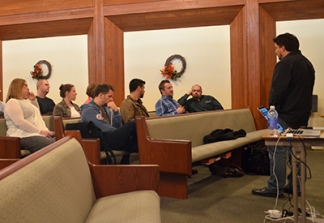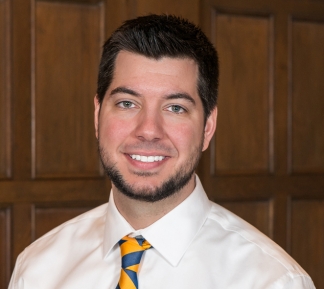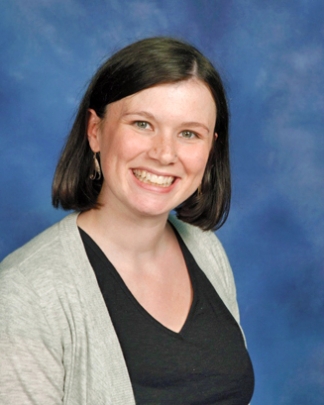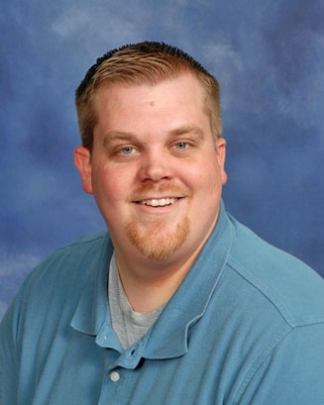news article
Jason Moore shares with young clergy the five questions that visitors won’t ask
November 18, 2014 / By Christian Vischi / .(JavaScript must be enabled to view this email address)
In that long line at the mall this Christmas shopping season, there may be a few mystery shoppers. These covert consumers are paid to provide details on all facets of their shopping experience – from prices to customer service. Jason Moore, who is a creative worship specialist, author and worship coach, has been a "mystery guest" at many churches over the past several years, and encourages local churches to heed the lessons learned from these visits. And he is not the only one doing the visiting.
 According to a June 2014 article posted at Christianity Today, Faith Perceptions – a company with more than 13,500 mystery guests in its nationwide database – paid its members to visit and evaluate more than 4,000 churches across the U.S. over a six-year period, rating them in 16 categories ranging from community awareness and greetings, to music, diversity and youth ministry programs.
According to a June 2014 article posted at Christianity Today, Faith Perceptions – a company with more than 13,500 mystery guests in its nationwide database – paid its members to visit and evaluate more than 4,000 churches across the U.S. over a six-year period, rating them in 16 categories ranging from community awareness and greetings, to music, diversity and youth ministry programs.
In general, the results of that report are that “small churches are friendlier, while large churches have better publicity and higher sermon quality,” according to the article. And “all church sizes scored ‘very poor’ – 5 to 6 out of 10 – in diversity and outreach … and except for megachurches, churches also scored poorly on raising community awareness about themselves and on the likelihood that mystery guests would return based on their first impression.”
Moore, a resident of Ohio, was back in Upper New York for a midday session with young clergy. (He was in the area Sept. 8-11, 2014 for four one-day workshops titled Make Worship More Creative; read the article here.)
Because of the shorter timeframe he gave an abbreviated version of the one-day workshop, and he added a section: Five questions your visitors are thinking but won’t ask.
The first is “Where am I supposed to go?”
In the coming weeks, Moore recommends that the young clergy partner with a fellow clergy member in close proximity to do a mystery visit, to be a “secret worshipper.”
Check everything, especially signage, said Moore, “The front door of your church is no longer the front door of your church, it is the website. Even if it is not the most fancy website, make sure it is accurate.” During one visit he tried to locate the sanctuary, following the signage in two slightly different directions before a parishioner noticed him and guided the way.
For the website, make sure you have the physical location and worship times listed. Photos of the staff are great, too. People “want to see what this pastor looks like,” he said.
Pastor Paul Winkelman, appointed to the Homer Avenue UMC in Cortland and the Freeville UMC, suggested including a photo directory for visitors inside your new guest welcome kit. Moore said he hadn’t thought about that but would start to include it in recommendations he gives at future workshops.
The second question is “Who are these people?”
“Keep in mind that visitors to your church don’t know who you are. Identify yourself; it never hurts to say, ‘Good morning, I am Pastor Jason, and it’s really great to have you,” Moore said. It is vitally important for your children’s ministry to introduce the leaders, to make both parents and children more comfortable. Along with that, Moore strongly encourages churches to have a child check-in and check-out procedure to ensure parents and children don't get separated.
Name tags can be a great way for new people to meet and greet the church regulars, but “nothing makes a visitor feel more left out than to have a nametag for everyone except them,” Moore said. “I’m not saying go home and throw out all your name tags, but at least have a couple of blank ones.”
Although attendance cards are sometimes nothing more than a passing comment, encourage your guests to fill them out. It will give you a chance to connect with them later. And one of the best things you can do to make an early connection is to give your guest something. “Actually give it to them,” Moore said, like a mug, a newsletter or a gift bag. But no matter what, don’t say “It is hanging in the back, grab one on your way out.” You will immediately lose any connection right there, he said.
“When do we actually start?” is the third question on visitor’s minds, especially when the start of worship is pushed back from the published time.
When you are a visitor, the time before worship starts is excruciating, Moore said, because you don’t know who anybody is. He recommends starting on time or posting a more accurate start time. If you have gathering music and 15 minutes for mingling, include that information in your stated start time.
“What’s been happening up until now?” Don’t assume that people know the drill, Moore said. People who are visiting for the first time may or may not have visited your website prior to coming to service. Even if they have, you may not have included the full history of your steeple renovation, so passing a contractor’s hardhat around at the beginning of service without any explanation could put off your visitors.
“I’m supposed to do what?” As a one-year, five-year, perhaps lifelong United Methodist, you likely know the order of worship and the liturgy. But a visitor likely will not; they may not even know what liturgy means. Don’t assume that putting an item in bold in the bulletin is a signal guests understand.
Make things obvious, he said; state “please stand” when it is time to stand, and explain things such as what communion by intinction means.
“... churches have rituals and people are just supposed to get it,” Moore said, is not the correct response to encourage visitors.
For more, find Moore online at his website and Facebook page.
Thought sharing ...
Young clergy share their thoughts on the Creative Worship Workshop with Jason Moore and lunch with Upper New York Resident Bishop Mark J. Webb and the Cabinet:
 Rev. Martin“Regarding Jason's workshop, the biggest takeaway was the need to emphasize visual imagery through metaphor. I also appreciated Jason's balanced approach to the need for/use of technology to present the metaphor. He was very clear that screens aren't necessary, but rather that the metaphor can be as simple as a domino held in your hand.
Rev. Martin“Regarding Jason's workshop, the biggest takeaway was the need to emphasize visual imagery through metaphor. I also appreciated Jason's balanced approach to the need for/use of technology to present the metaphor. He was very clear that screens aren't necessary, but rather that the metaphor can be as simple as a domino held in your hand.
In Lake Placid, we've already placed an increased emphasis on metaphor and the ways we can redeem – or connect – whatever image we're using. For us, the next steps – in the next month or two – would be to expand our worship-planning team.”
– The Rev. John Martin, pastor at the Adirondack Community Church in Lake Placid
On spending time with the bishop and Cabinet: “As always, it is gratifying and fruitful to have direct access to the bishop and Cabinet. I appreciated having the time to spend with the district superintendents and the freedom to have an honest dialogue about the questions and issues that are on our hearts as ‘young’ clergy persons in Upper New York.”
 Rev. PreuningerOn the power of Metaphor: “Jason Moore’s presentation was a well-articulated reminder of the power of metaphor – both in the biblical text and in the created worship environment. It was interesting to see the many creative ways his team has been able to interpret biblical texts and craft meaningful worship environments using metaphor. Although much of the media – custom videos, graphic design, etc. – he presented remains inaccessible to most Upper New York clergypersons, the underlying message of creating clear and focused worship experiences centered on a single image easily translates to all worship settings in our Annual Conference.”
Rev. PreuningerOn the power of Metaphor: “Jason Moore’s presentation was a well-articulated reminder of the power of metaphor – both in the biblical text and in the created worship environment. It was interesting to see the many creative ways his team has been able to interpret biblical texts and craft meaningful worship environments using metaphor. Although much of the media – custom videos, graphic design, etc. – he presented remains inaccessible to most Upper New York clergypersons, the underlying message of creating clear and focused worship experiences centered on a single image easily translates to all worship settings in our Annual Conference.”
On the importance of creating a worship team: “I am the first to admit that it is difficult to gather a consistent and functioning worship team. Jason’s workshop served as both a reminder and a challenge that working collaboratively on worship planning and implementation is the only way we will be able to successfully implement high-level successful worship experiences in our ministry contexts. This is difficult and takes much time and effort on the part of the clergyperson, but I am confident that it will ultimately pay off. I plan to work intentionally over the next semester to gather a functioning worship team of students to see if we can bring our weekly worship experiences to the next level.”
– The Rev. Colleen Preuninger, United Methodist ecumenical chaplain at Hendricks Chapel, Syracuse University
“ … to some extent (it felt like) I was in a workshop for public education teachers. I say this because, in being a former public school teacher and in being a permanently certified New York state public school teacher, there was a lot of training and emphasis placed upon different learning styles. One of the popular frameworks that I learned my first time in graduate school was that of Dr. Howard Gardner's ‘Theory of Multiple Intelligences.’ This theory displays the reality of people learning and having different aptitudes to learn and grow in a variety of ways. In this way, some people learn and grow through auditory means, some through visual means, some through hands-on or kinesthetic means, etc.
 Pastor WinkelmanGiven this, Jason Moore taught (us) … the notion of using ‘metaphors’ that would enhance learning and growth in a worship service. (Moore gave an example from his time on staff at the Ginghamsburg Community Church, sharing that the Rev. Dr. Michael Slaughter once enhanced a worship service on the theme of Jesus being the bread of life by having fresh baked bread and active bread machines in the sanctuary.)
Pastor WinkelmanGiven this, Jason Moore taught (us) … the notion of using ‘metaphors’ that would enhance learning and growth in a worship service. (Moore gave an example from his time on staff at the Ginghamsburg Community Church, sharing that the Rev. Dr. Michael Slaughter once enhanced a worship service on the theme of Jesus being the bread of life by having fresh baked bread and active bread machines in the sanctuary.)
While such a thing might seem daunting for many of our smaller churches, particularly when the pastor is the only staffperson, I am going to continue to seek opportunities to enhance worship through ‘metaphors,’ and other means to reach people of various leaning styles. I will do this to help those in worship understand and learn Scripture better, to help those in worship have a deeper faith and walk with Jesus Christ, and to have worship and a sermon that people remember. Or as one of my homiletics professors at the United Theological Seminary would often say, ‘A sermon that walks out the door with the worshippers’ when worship has ended. All in all then, I plan to implement this learning starting this Sunday in worship!”
– Pastor Paul Winkelman, appointed at Cortland’s Homer Avenue UMC and the Freeville UMC